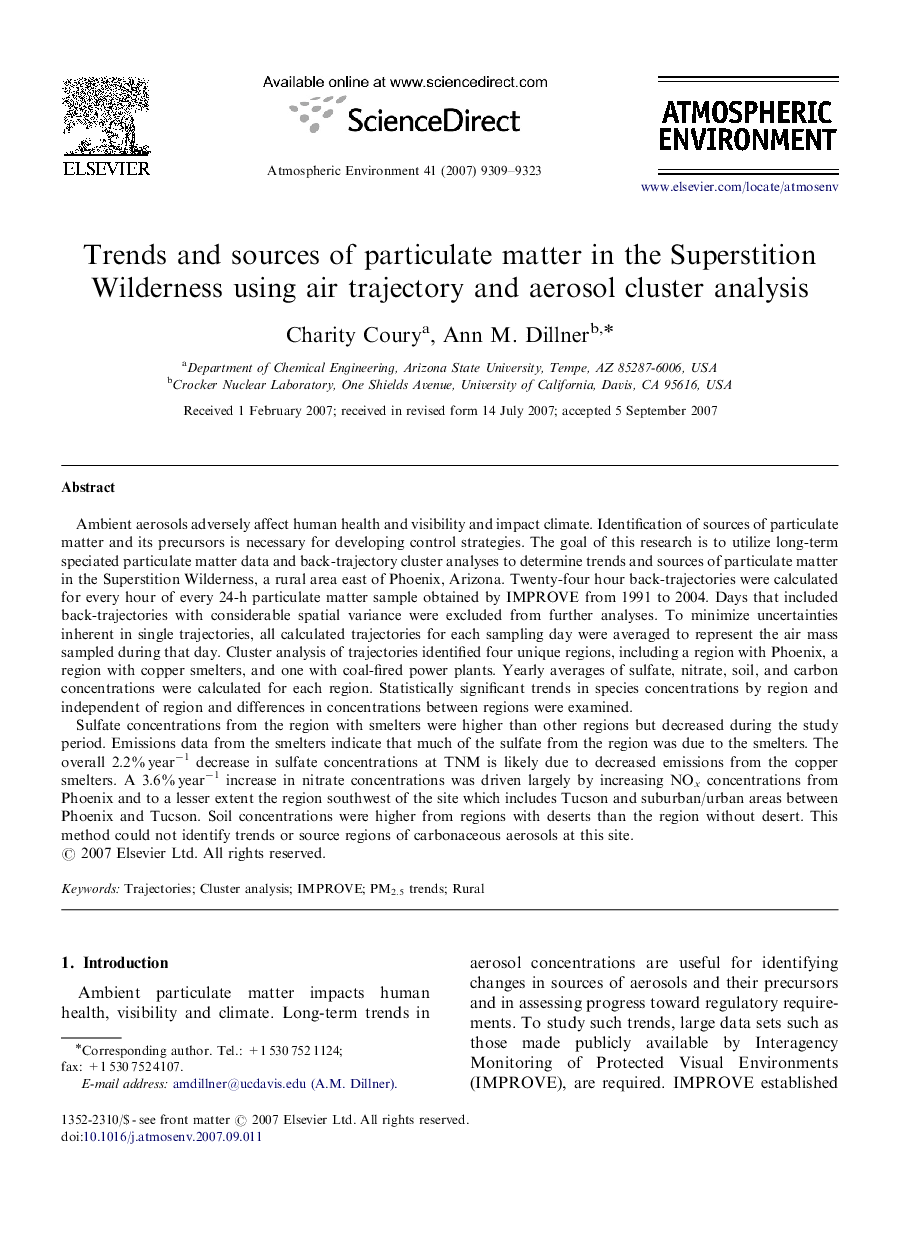| کد مقاله | کد نشریه | سال انتشار | مقاله انگلیسی | نسخه تمام متن |
|---|---|---|---|---|
| 4442872 | 1311170 | 2007 | 15 صفحه PDF | دانلود رایگان |

Ambient aerosols adversely affect human health and visibility and impact climate. Identification of sources of particulate matter and its precursors is necessary for developing control strategies. The goal of this research is to utilize long-term speciated particulate matter data and back-trajectory cluster analyses to determine trends and sources of particulate matter in the Superstition Wilderness, a rural area east of Phoenix, Arizona. Twenty-four hour back-trajectories were calculated for every hour of every 24-h particulate matter sample obtained by IMPROVE from 1991 to 2004. Days that included back-trajectories with considerable spatial variance were excluded from further analyses. To minimize uncertainties inherent in single trajectories, all calculated trajectories for each sampling day were averaged to represent the air mass sampled during that day. Cluster analysis of trajectories identified four unique regions, including a region with Phoenix, a region with copper smelters, and one with coal-fired power plants. Yearly averages of sulfate, nitrate, soil, and carbon concentrations were calculated for each region. Statistically significant trends in species concentrations by region and independent of region and differences in concentrations between regions were examined.Sulfate concentrations from the region with smelters were higher than other regions but decreased during the study period. Emissions data from the smelters indicate that much of the sulfate from the region was due to the smelters. The overall 2.2% year−1 decrease in sulfate concentrations at TNM is likely due to decreased emissions from the copper smelters. A 3.6% year−1 increase in nitrate concentrations was driven largely by increasing NOx concentrations from Phoenix and to a lesser extent the region southwest of the site which includes Tucson and suburban/urban areas between Phoenix and Tucson. Soil concentrations were higher from regions with deserts than the region without desert. This method could not identify trends or source regions of carbonaceous aerosols at this site.
Journal: Atmospheric Environment - Volume 41, Issue 40, December 2007, Pages 9309–9323